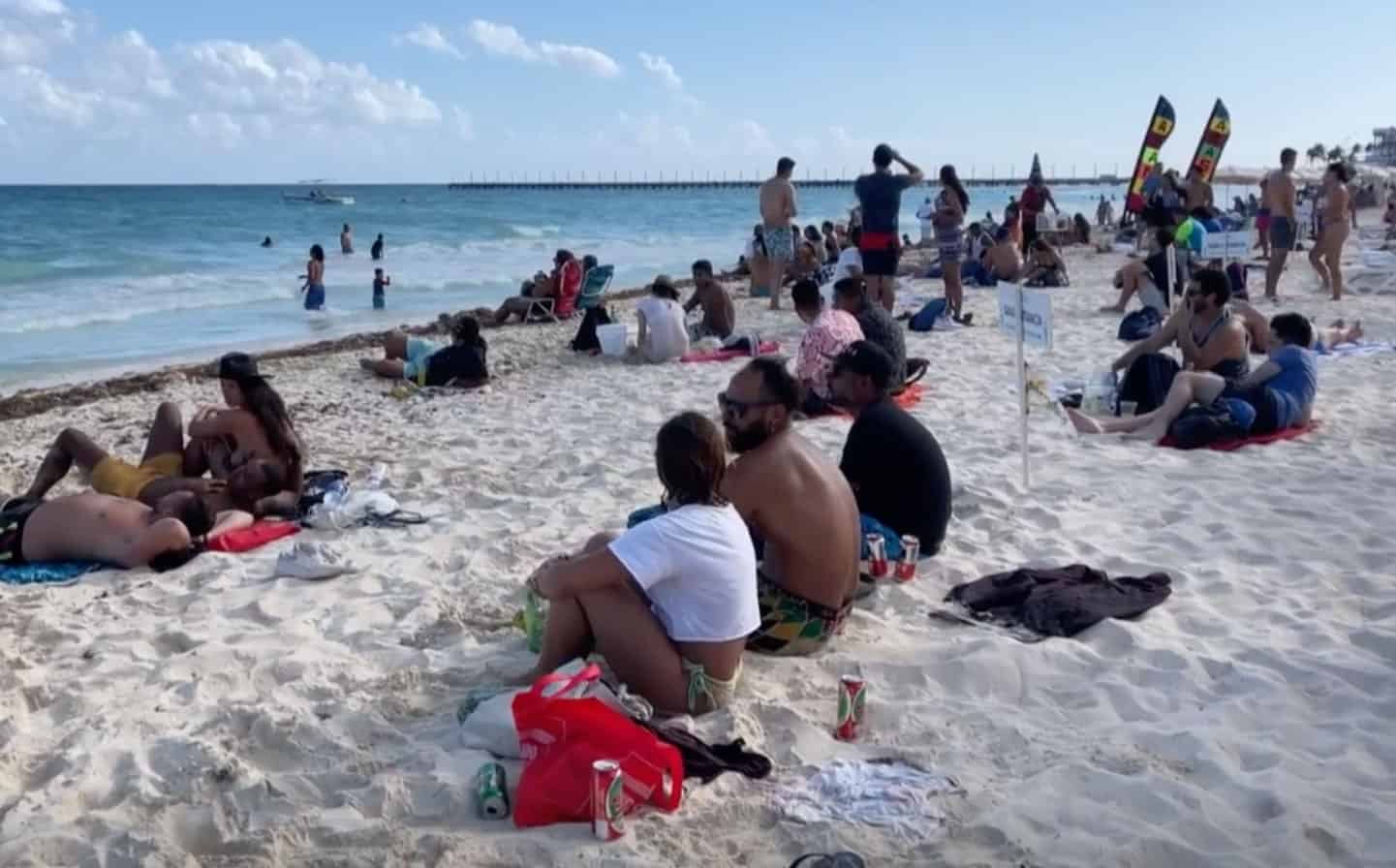Although the coronavirus remains a very real threat to people’s health, the pandemic is no longer a barrier to tourism in Quintana Roo, where thousands of spring break visitors – many of whom appear to have few concerns about the risk of infection – have flocked to enjoy the sun, sand and carefree party atmosphere in destinations such as Cancún, Playa del Carmen and Tulum.
And even more foreign and domestic visitors are expected to descend on the Caribbean coast state in the coming days as tourism-oriented businesses starved of revenue in 2020 gear up for a bumper Easter vacation period.
The Riviera Maya region, home to the state’s premier destinations, is open to tourism “without restrictions,” the newspaper Milenio reported, adding that it appears that the coronavirus – which has claimed almost 200,000 lives in Mexico including more than 2,000 in Quintana Roo – has magically disappeared.
In the beach destinations of Cancún, Playa del Carmen, Tulum, Isla Mujeres and Mahahual, wild spring break partying started a week ago, Milenio reported, noting that there are large numbers of visitors from the United States, Canada, France and Italy as well as several Latin American countries including Colombia, Brazil and Argentina.
The streets, bars, nightclubs, hotels and public transit are full of tourists and expected to fill up even more over Easter, Milenio said. The concept of social distancing has largely been forgotten and many of the mainly young tourists eschew face masks as they cavort in close proximity to friends and strangers alike.

Kissing, hugging and the sharing of drinks and cigarettes is commonplace while basic health measures such as temperature checks and the application of antibacterial gel have gone by the wayside at many venues, such is the eagerness to usher tourists in.
Milenio reported that there is little fear of infection among spring breakers, who are far more focused on having a good time while seemingly forgetting the very existence of the pandemic in the process.
“Covid can get screwed! [The pandemic] hasn’t come to an end but neither have we so let’s have fun,” a group of young vacationers from Mexico City told the newspaper as they strolled down 5th Avenue, Playa del Carmen’s main tourist strip, while passing around a bottle of tequila.
An older American tourist said that he had no fear being out and about among large crowds of people in Playa because he’s already been vaccinated. “I’ve had both doses so let’s celebrate,” he said.
While hundreds of communities in Mexico shut themselves off from outsiders to prevent the entry of the coronavirus, most residents of tourist destinations in Quintana Roo, where unemployment skyrocketed in 2020, welcome the influx of visitors – despite the risks that entails – because of the money they inject into the local economy.
The ease of entry into the state for international and domestic tourists flying into Cancún airport stands in stark contrast to the situation on Mexico’s southern border, which closed to nonessential traffic last week.

That decision, ostensibly taken to combat the pandemic, appears to be motivated more by the government’s desire to stem migration from Central America – and thus appease its counterpart in the United States.
Quintana Roo, which expects to receive more than 100,000 tourists this spring, is not the only state where tourism is recovering strongly even as authorities in the United States – the main source country for international visitors to Mexico – warn U.S. citizens not to travel here due to the high number of coronavirus cases.
Approximately 100,000 U.S. tourists are expected to vacation in Los Cabos, Baja California Sur, in the coming weeks, the newspaper El Independiente reported, noting that the arrival of 60,000 Mexican visitors is also anticipated.
The insurance company Allianz recently analyzed more than 1.8 million flight itineraries of Americans taking short breaks during the spring and determined that the three most popular destinations were, in order, Cancún, Los Cabos and Puerto Vallarta, Jalisco.
Although Mexico has suffered one of the worst pandemics in the world (it ranks third for total Covid-19 deaths behind only the United States and Brazil), measures to control the spread of the virus have been much less strict here than in many countries around the world.
In addition, the government has never closed the borders to foreigners arriving by air and no one is required to go into quarantine even if they arrive from countries where new, more contagious and potentially more dangerous strains of the coronavirus are circulating widely.
The lack of strict rules and restrictions has made Mexico an attractive destination for people seeking to “escape the pandemic,” even though the risk of infection here is likely just as high, or even higher, than in their home countries.
Health authorities have warned that Mexico could see a third wave of the coronavirus and urged people not to drop their guard over the Easter vacation period and not gather with family and friends in large numbers.
Whether the pandemic in Mexico, where new case numbers have been on the wane for almost two months after reaching a new peak in January, will worsen in the weeks after Easter remains to be seen. But if there is a Covid surge it will be unsurprising if infections in Mexico’s most popular tourist destinations drive it.
Source: Milenio (sp), El Independiente (sp)
